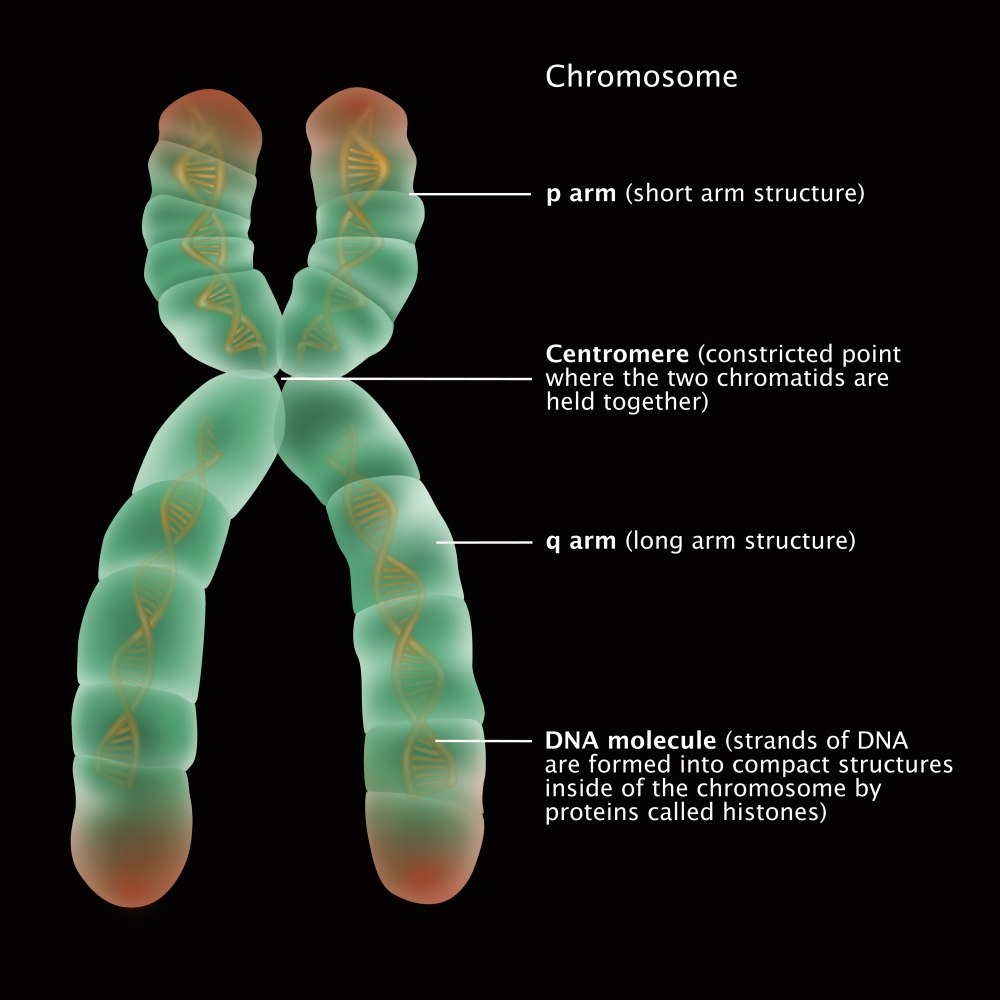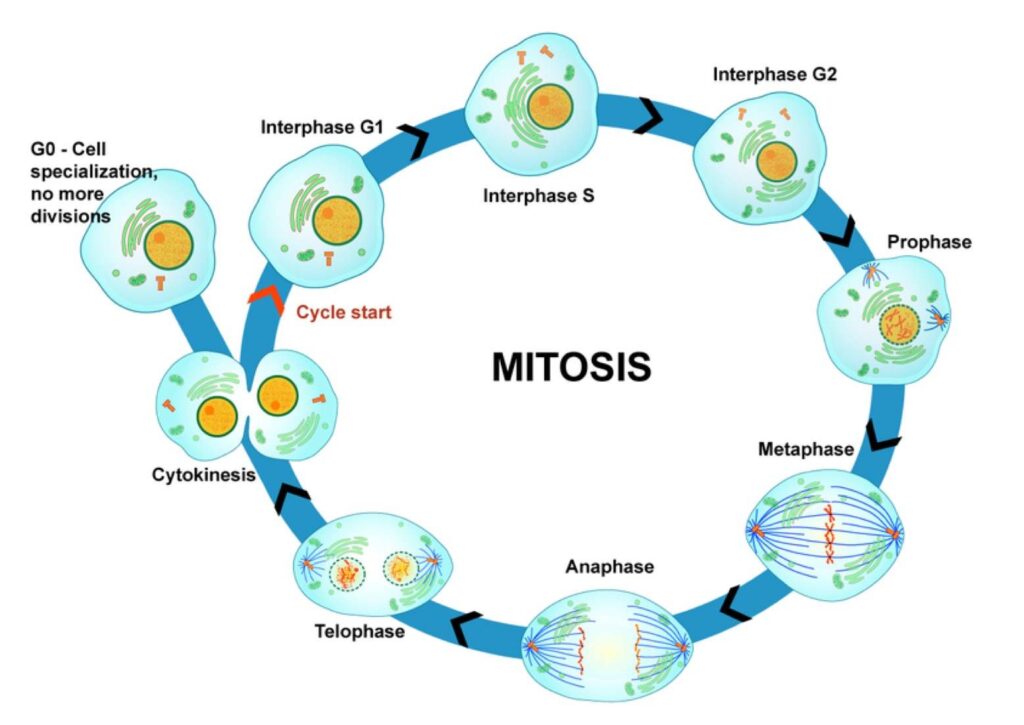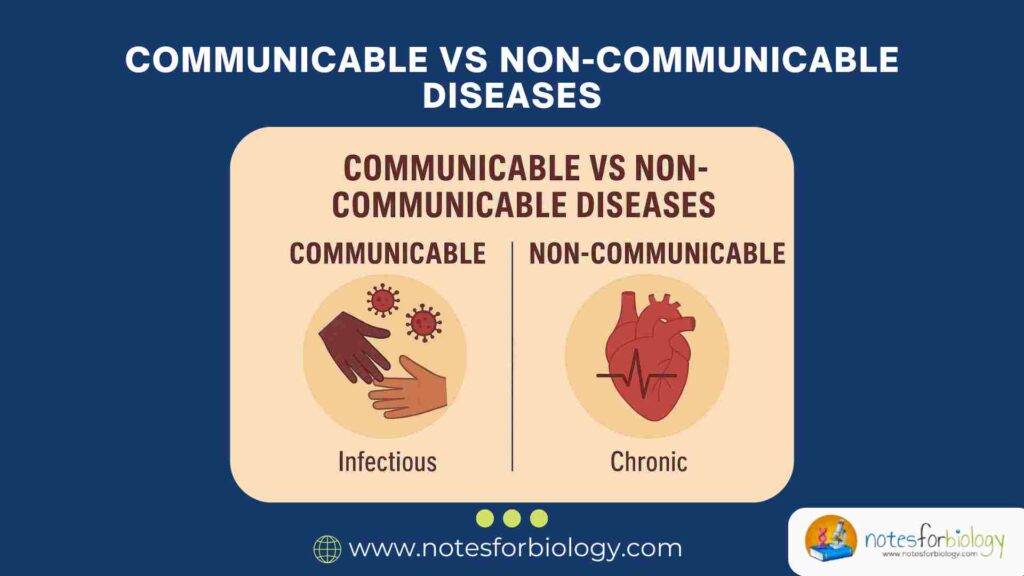Introduction
A chromosome is a long, thread-like structure made up of DNA (deoxyribonucleic acid) and proteins. Every living being—whether it’s a human, a bird, or a tree—carries a hidden instruction manual inside each cell. This instruction manual is stored in the form of chromosomes. These tiny, thread-like structures carry the genetic blueprint that tells our body how to grow, function, and even respond to diseases.
In this article, we’ll take a journey through the history of chromosome discovery, how they behave during cell division, what happens when mutations occur, and how these can lead to disorders. Let’s begin!
Table of Contents
What is a Chromosome?
A chromosome is a long, thread-like structure made up of DNA (deoxyribonucleic acid) and proteins. It is found in the nucleus of eukaryotic cells and contains hundreds or thousands of genes, which are the functional units of heredity.

Humans have 46 chromosomes in most cells, arranged in 23 pairs. One set comes from the mother, the other from the father.
Section 1: History of Chromosome Discovery
The story of chromosome discovery spans over a century and is filled with fascinating milestones.
1. Early Microscopic Observations
- In the late 1800s, scientists began observing thread-like structures in the cell nucleus during cell division.
- Walther Flemming (1879) was the first to describe these structures while studying mitosis. He called them “chromatin” because they stained easily with dyes.
2. The Name “Chromosome”
- The term chromosome was coined by Heinrich Wilhelm Waldeyer in 1888.
- “Chromo” means color and “soma” means body—referring to how these structures easily took up stain under a microscope.
3. Chromosomes and Heredity
- In the early 1900s, Walter Sutton and Theodor Boveri proposed the chromosome theory of inheritance—that chromosomes are the carriers of genes.
4. Modern Discoveries
- With the discovery of DNA’s structure in 1953 by Watson and Crick, the link between chromosomes and genetic information became clearer.
- Today, advanced techniques like karyotyping, genome sequencing, and chromosome painting allow us to study chromosomes in great detail.
Section 2: Chromosomes in Cell Division
Chromosomes play a crucial role in cell division, ensuring that each new cell gets the correct set of genetic information.
1. Types of Cell Division
There are two main types of cell division involving chromosomes:
A. Mitosis

- Occurs in somatic (body) cells.
- Produces two identical daughter cells.
- Each has the same number of chromosomes (46 in humans).
- Important for growth, repair, and replacement.
B. Meiosis

- Occurs in germ cells (sperm and egg).
- Produces four cells, each with half the number of chromosomes (23 in humans).
- Enables genetic diversity through crossing over and independent assortment.
2. Chromosome Behavior in Cell Division
During both mitosis and meiosis, chromosomes undergo several stages:
Prophase
- Chromatin condenses into visible chromosomes.
- Each chromosome consists of two sister chromatids joined at the centromere.
Metaphase
Chromosomes line up at the cell’s equator.
Anaphase
Sister chromatids are pulled to opposite ends of the cell.
Telophase
- Chromatids arrive at poles; the cell starts dividing.
In meiosis, these steps happen twice (Meiosis I and II), creating cells with half the chromosome number.
Section 3: Chromosomal Mutations
While chromosomes are usually copied accurately, mistakes can happen. These are called mutations.
1. What is a Chromosomal Mutation?
A chromosomal mutation is a change in the number or structure of chromosomes. It can affect many genes at once and lead to serious consequences or, in rare cases, beneficial traits.
2. Causes of Chromosomal Mutations
- Errors during cell division (especially meiosis)
- Radiation exposure
- Chemical mutagens
- Viral infections
- Aging of eggs or sperm
3. Types of Chromosomal Mutations
A. Structural Mutations
These involve changes to the physical structure of chromosomes:
- Deletion – Loss of a part of the chromosome.
- Duplication – Repeating a segment.
- Inversion – A segment flips and reattaches.
- Translocation – A piece moves to another chromosome.
B. Numerical Mutations (Aneuploidy)
These involve the loss or gain of whole chromosomes:
- Monosomy – One chromosome missing (e.g., Turner syndrome).
- Trisomy – One extra chromosome (e.g., Down syndrome).
Section 4: Chromosomal Disorders
When chromosomal mutations occur, they can lead to disorders—conditions that affect health and development.
1. Down Syndrome (Trisomy 21)
- Cause: Extra copy of chromosome 21.
- Symptoms: Intellectual disability, heart defects, distinct facial features.
- Frequency: 1 in 700 births.
2. Turner Syndrome (Monosomy X)
- Cause: Missing one X chromosome in females.
- Symptoms: Short stature, infertility, webbed neck.
- Frequency: 1 in 2,000–5,000 female births.
3. Klinefelter Syndrome (XXY)
- Cause: One or more extra X chromosomes in males.
- Symptoms: Tall stature, low testosterone, reduced fertility.
- Frequency: 1 in 600 male births.
4. Cri-du-chat Syndrome
- Cause: Deletion on chromosome 5.
- Symptoms: High-pitched cry in infants, intellectual delay.
5. Edwards Syndrome (Trisomy 18)
- Cause: Extra chromosome 18.
- Symptoms: Severe developmental issues; most infants don’t survive long.
6. Patau Syndrome (Trisomy 13)
- Cause: Extra chromosome 13.
- Symptoms: Severe brain and heart defects; usually fatal in infancy.
7. Chronic Myeloid Leukemia (CML)
- Cause: Translocation between chromosomes 9 and 22 (Philadelphia chromosome).
- Symptoms: Uncontrolled growth of white blood cells.
How Are Chromosomal Disorders Diagnosed?
Doctors use various tools to detect chromosome-related conditions:
1. Karyotyping
- A picture of chromosomes to identify abnormalities in number or structure.
2. FISH (Fluorescence In Situ Hybridization)
- Uses fluorescent probes to detect specific DNA regions.
3. Prenatal Testing
- Amniocentesis and chorionic villus sampling (CVS) to detect chromosomal problems before birth.
4. Genetic Counseling
- Helps families understand risks, inheritance, and options.
Can Chromosomal Disorders Be Treated or Prevented?
Most chromosomal disorders cannot be cured, but symptoms can be managed:
Treatment Approaches
- Therapies: Physical, speech, and occupational therapy.
- Medications: For associated conditions (like seizures or heart problems).
- Educational support: Special education plans and tailored learning.
Prevention
- Not all disorders are preventable, but the risk can be reduced by:
- Prenatal care
- Avoiding radiation and toxic chemicals
- Genetic counseling for high-risk couples
- Folic acid supplements before and during pregnancy
Why Are Chromosomes So Important?
Chromosomes carry our entire genetic code. They determine:
- What we look like
- How our body functions
- Our risk for diseases
- How we respond to medications
Chromosomes also play a role in evolution, plant breeding, and biotechnology.
Summary Table: Key Facts About Chromosomes
| Aspect | Details |
|---|---|
| Chromosomes in Humans | 46 (23 pairs) |
| Discovered by | Walther Flemming (1879); Named by Waldeyer (1888) |
| Made of | DNA and proteins (histones) |
| Found in | Nucleus of eukaryotic cells |
| Role in Cell Division | Ensure accurate DNA distribution |
| Common Disorders | Down syndrome, Turner syndrome, CML |
| Diagnosed by | Karyotyping, FISH, Prenatal Testing |
| Treated by | Supportive care and therapy |
Conclusion
Chromosomes are at the very heart of biology. They’re the caretakers of our genetic code and play a major role in life, health, and evolution. From their discovery in the 19th century to their role in modern medicine, chromosomes continue to teach us about the incredible complexity and beauty of living organisms.
Understanding how chromosomes behave, mutate, and sometimes go wrong allows scientists and doctors to diagnose diseases, support affected individuals, and even explore therapies that could one day correct genetic errors. Whether you’re a student, researcher, or simply curious, learning about chromosomes opens the door to understanding life itself.
FREQUENTLY ASKED QUESTIONS
What is a chromosome?
A chromosome is a long, thread-like structure made of DNA and proteins found in the nucleus of a cell. It carries genes, which are instructions for how your body grows, functions, and passes traits from one generation to another.
How many chromosomes do humans have?
Humans have 46 chromosomes, arranged in 23 pairs. One set of 23 comes from your mother, and the other from your father.
Who discovered chromosomes?
Chromosomes were first described by Walther Flemming in 1879. The term “chromosome” (meaning “colored body”) was later coined by Heinrich Waldeyer in 1888.
Related Articles




